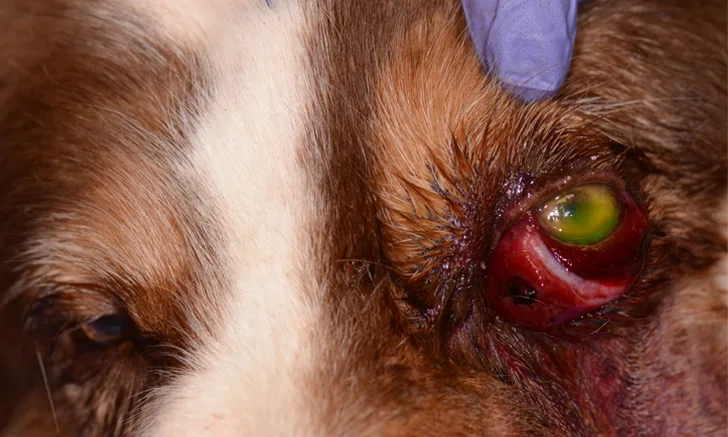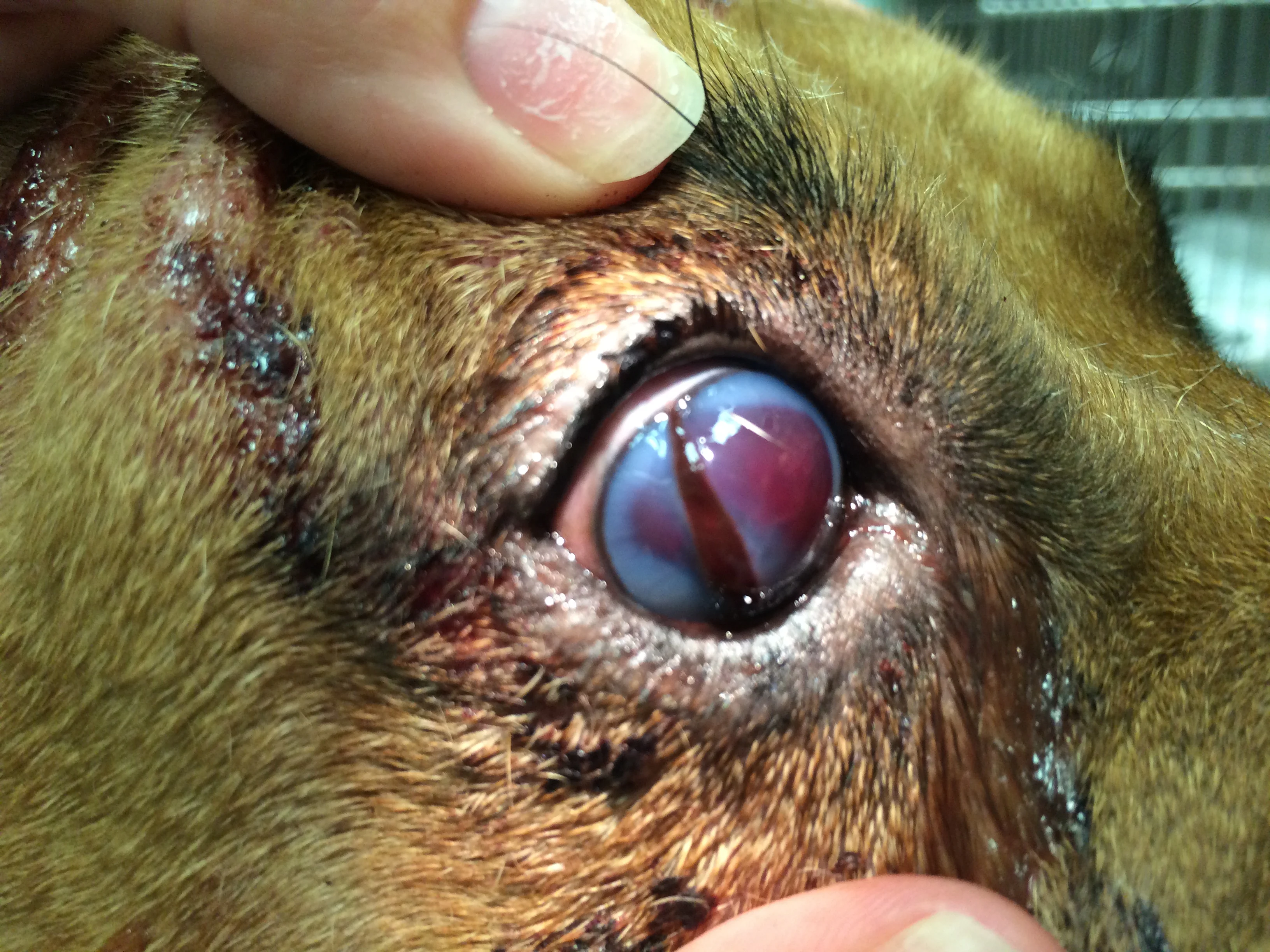
Hemorrhagic periocular discharge, elevated third eyelid with extensive conjunctival hemorrhage, severe chemosis, uveitis with marked miosis, and a superficial corneal ulcer stained with fluorescein seen in an 8-year-old spayed Australian shepherd with closed globe blunt trauma to the left eye. Image courtesy of Auburn University
In the Literature
Chan RX, Ledbetter EC. Sports ball projectile ocular trauma in dogs. Vet Ophthalmol. 2022;25(5):338-342. doi:10.1111/vop.12987
The Research ...
Ocular trauma is common in dogs, and all ocular structures are vulnerable to injury after trauma to the eye. Some injuries (eg, iris rupture) may cause few effects, but more extensive lesions (eg, glaucoma, retinal detachment) can result in a nonfunctional eye. Uveitis is common with ocular trauma and should be aggressively managed to prevent complications.1 Limited studies have reported eye injuries (eg, retinal detachment, hyphema) secondary to blunt and penetrating forces (eg, gunshots, cat clawing, bomb explosions).2-4

Periocular serous discharge, extensive deep corneal edema, and hyphema seen in a dog with an open-globe, full-length vertical corneal laceration secondary to blunt trauma. Image courtesy of Auburn University
This retrospective study described prognostic indicators and visual outcomes of dogs with sports ball projectile ocular injuries. Closed-globe injuries (n = 12) were more common than open-globe injuries (n = 6); were commonly presented with traumatic uveitis, hyphema, and subconjunctival hemorrhage; and were medically managed. Vision was maintained in 67% of cases. Open-globe injuries included corneal lacerations and scleral rupture, and all affected eyes required enucleation except one, which was managed with corneal laceration repair and third eyelid flap placement prior to referral (vision was maintained).
This retrospective study described prognostic indicators and visual outcomes of dogs with sports ball projectile ocular injuries. Closed-globe injuries (n = 12) were more common than open-globe injuries (n = 6); were commonly presented with traumatic uveitis, hyphema, and subconjunctival hemorrhage; and were medically managed. Vision was maintained in 67% of cases. Open-globe injuries included corneal lacerations and scleral rupture, and all affected eyes required enucleation except one, which was managed with corneal laceration repair and third eyelid flap placement prior to referral (vision was maintained).
...The Takeaways
Key pearls to put into practice:
Compared with trauma from lighter sports balls, ocular trauma from small, dense sports balls typically results in more extensive injury and more frequent initial presence of hyphema and is often associated with enucleation or a poor visual prognosis.
Open-globe injuries have a poor visual prognosis and often result in enucleation.
Ocular ultrasound and CT scans can help identify vitreal hemorrhage, retinal detachment, retinal hemorrhage, scleral rupture, and orbital wall fractures that may not be clinically evident.
You are reading 2-Minute Takeaways, a research summary resource presented by Clinician’s Brief. Clinician’s Brief does not conduct primary research.